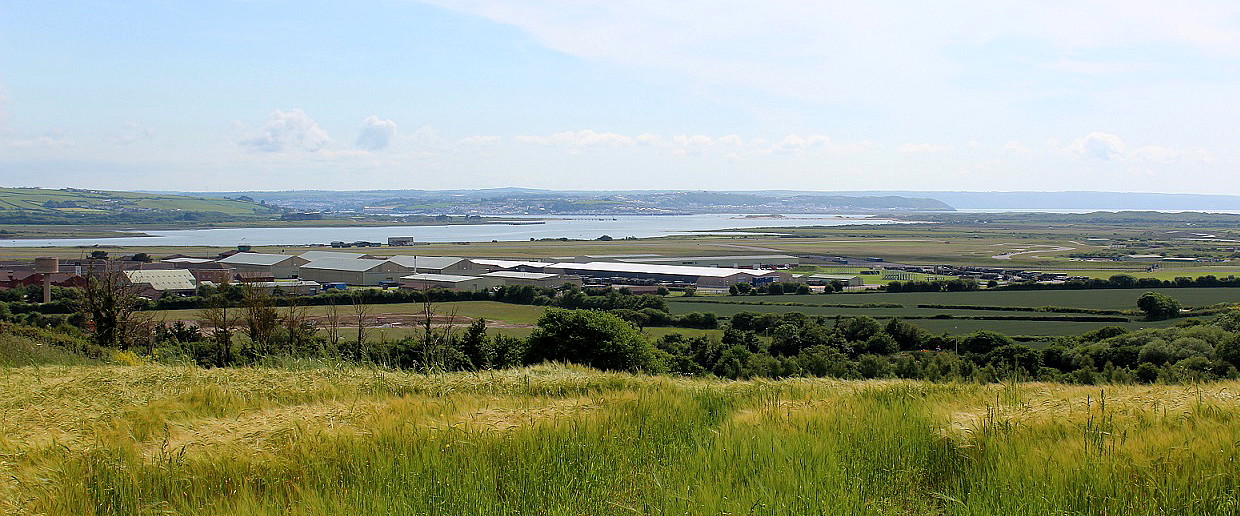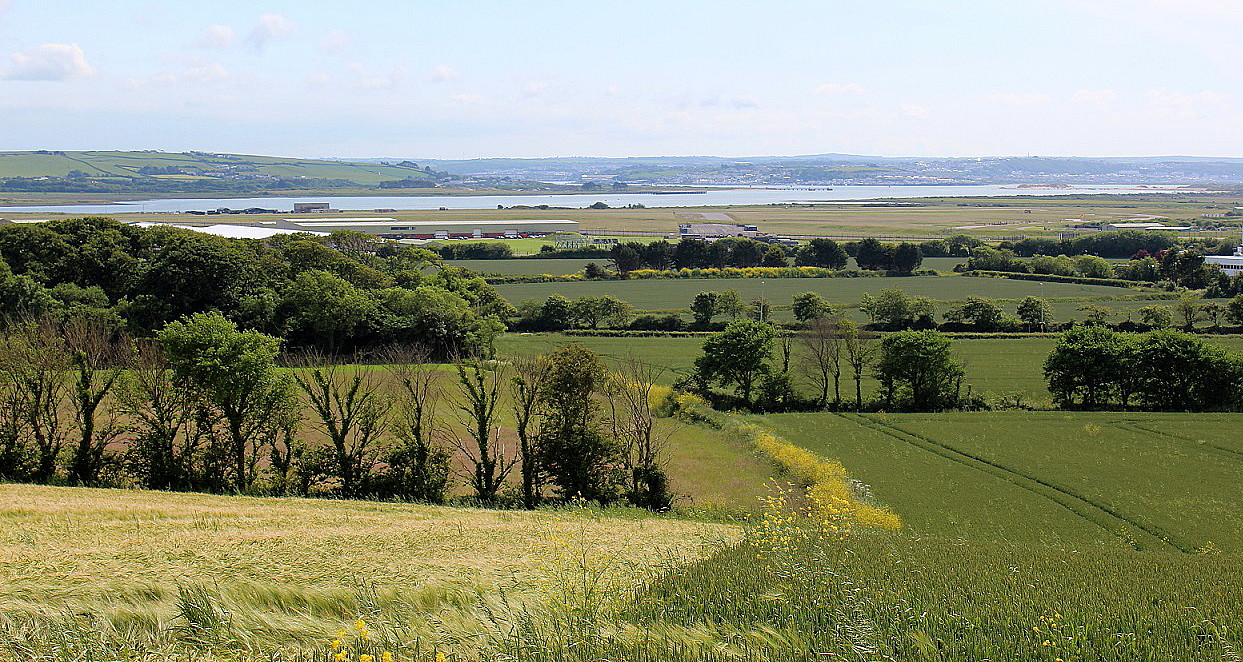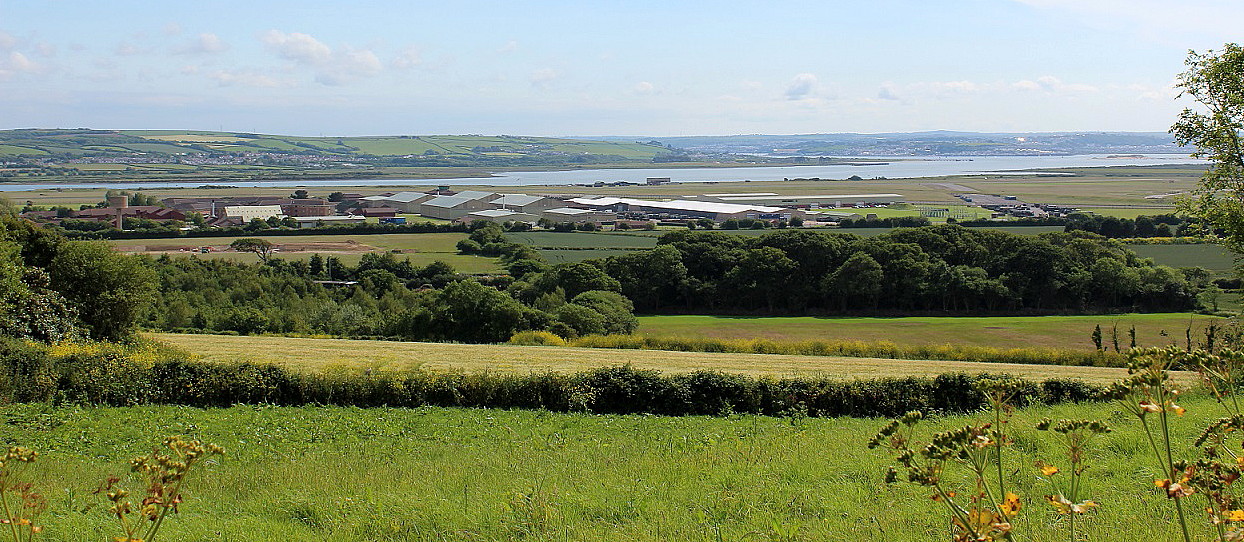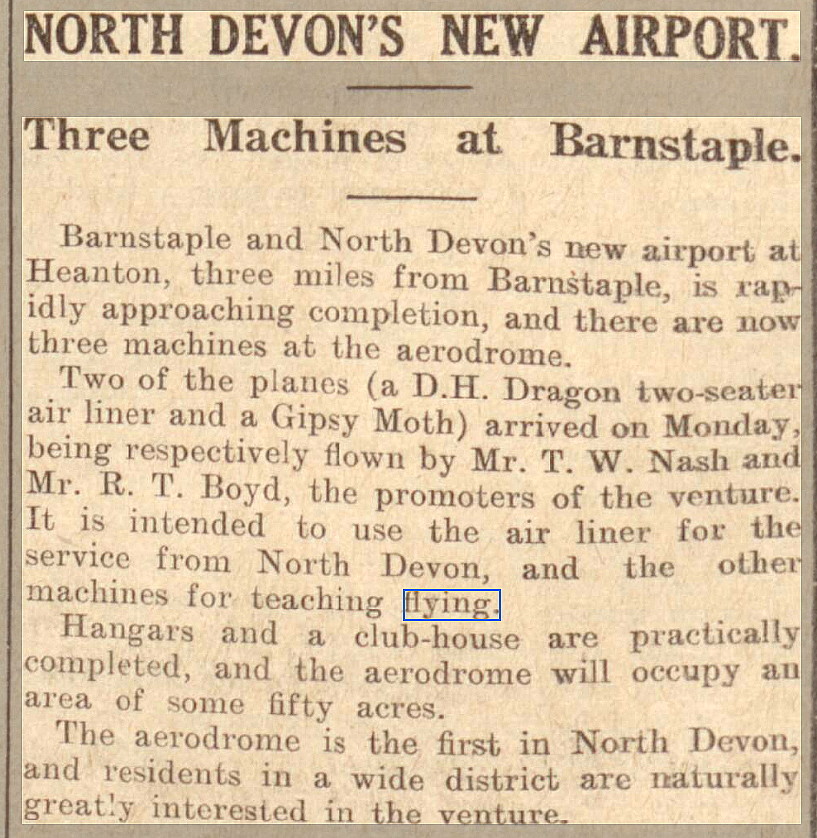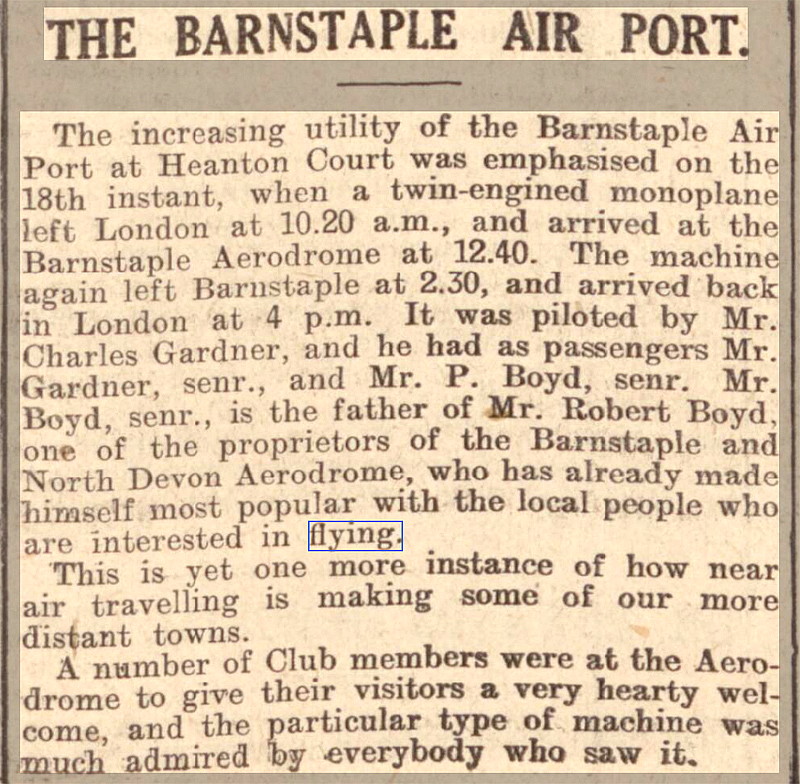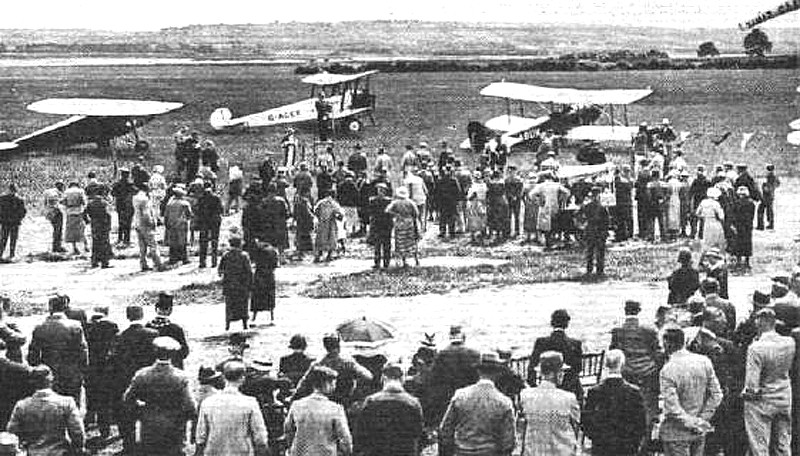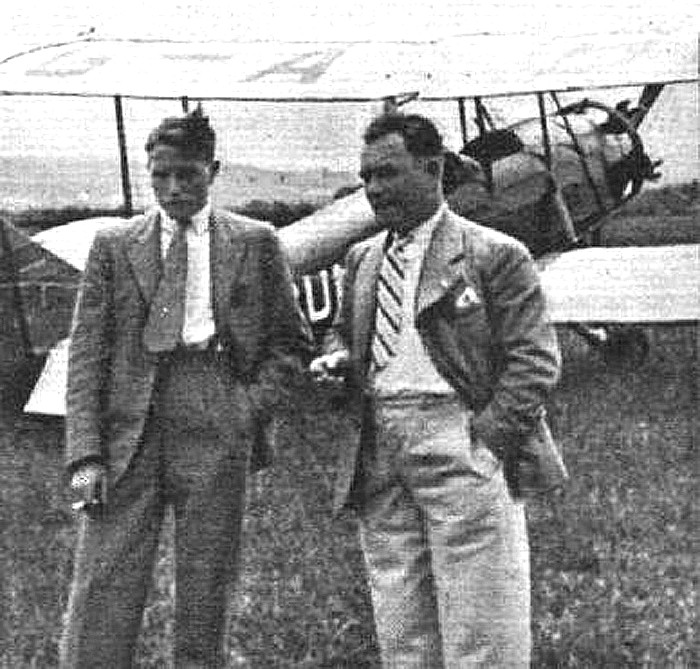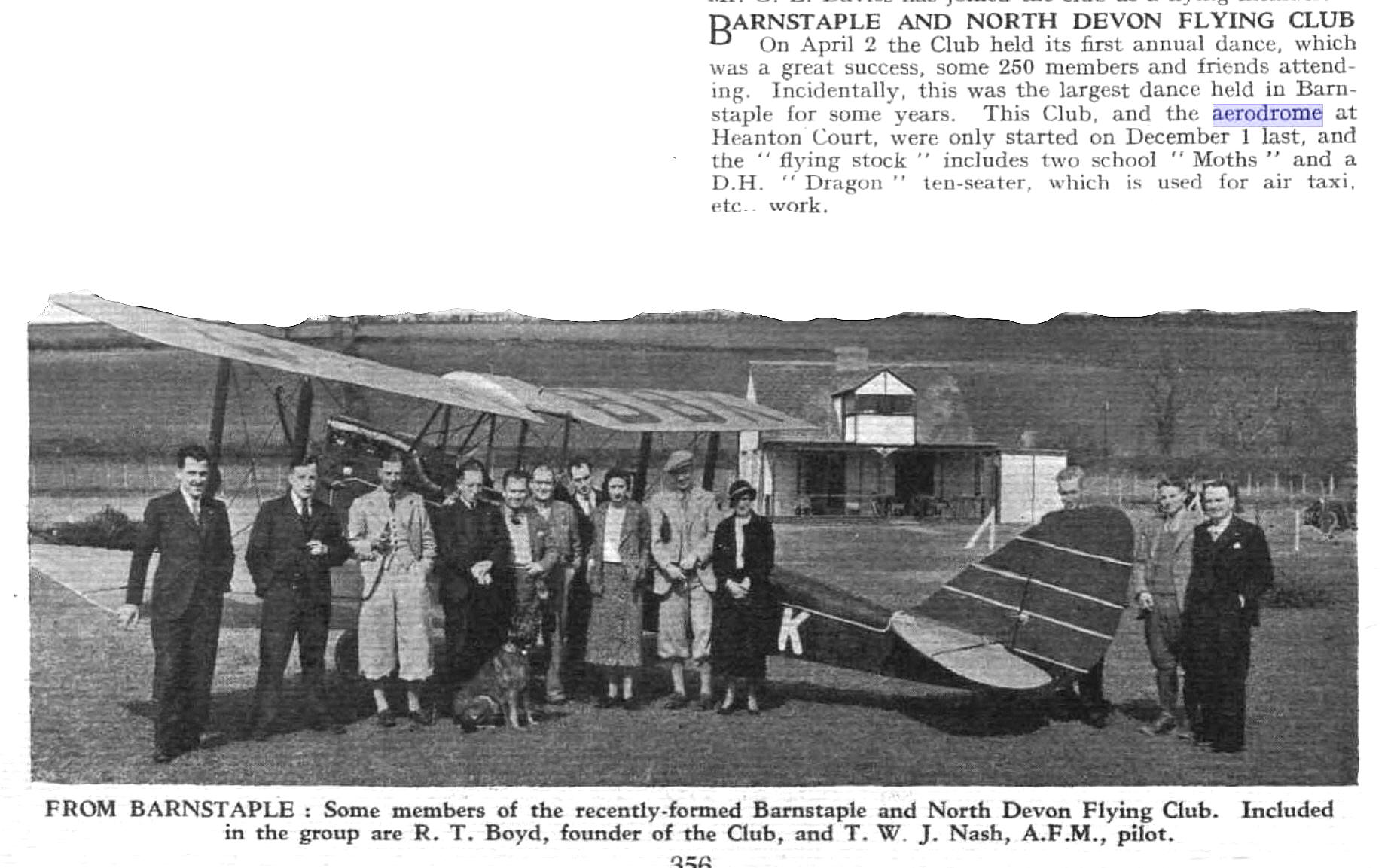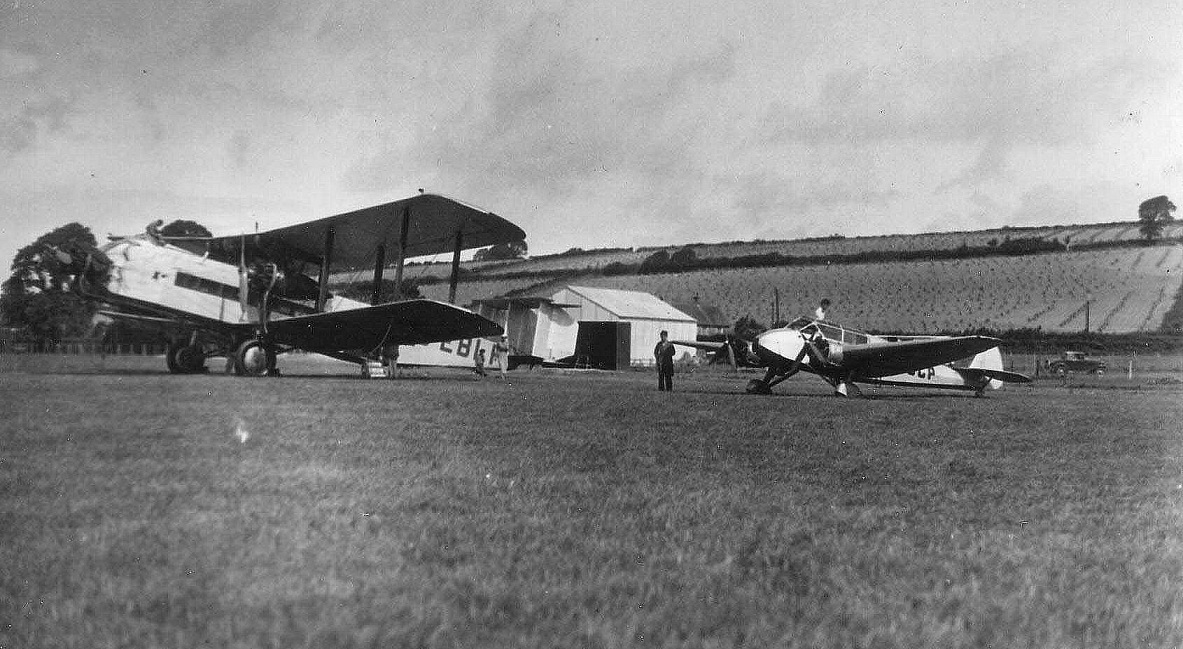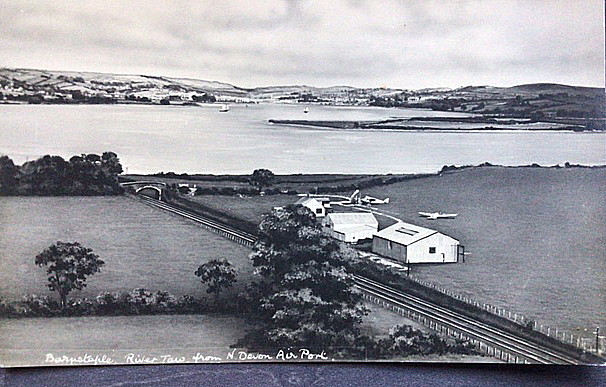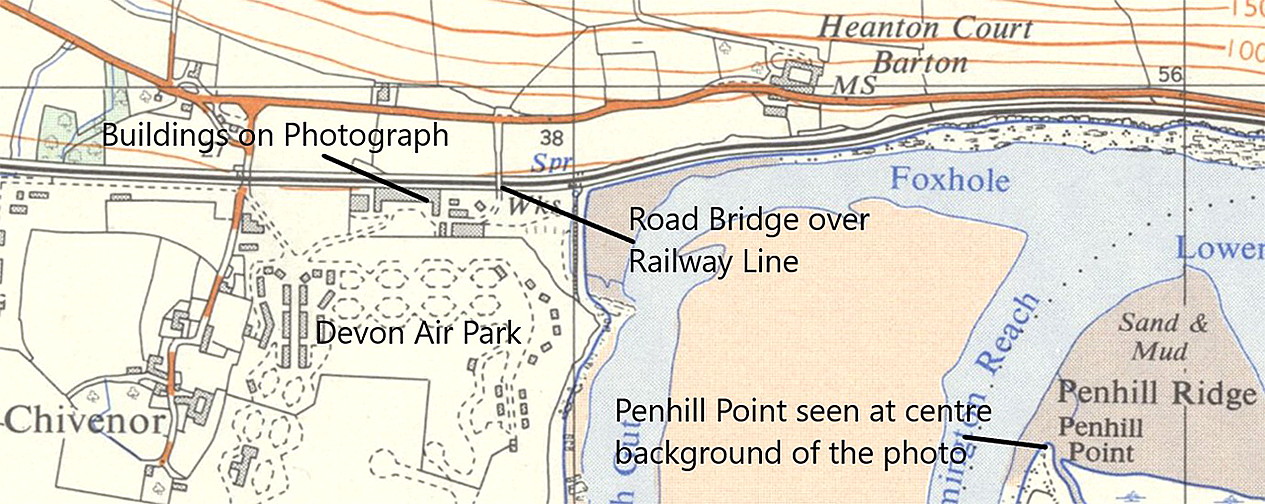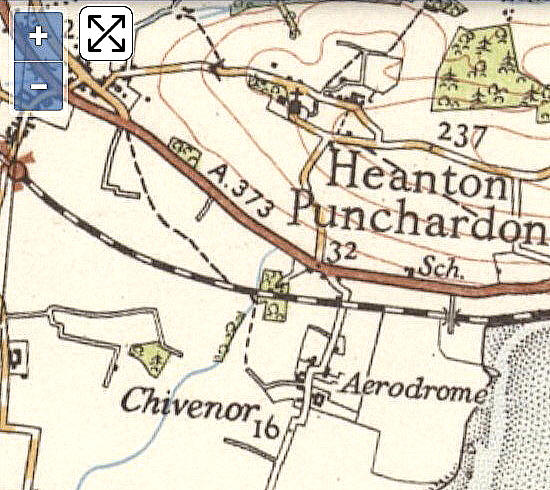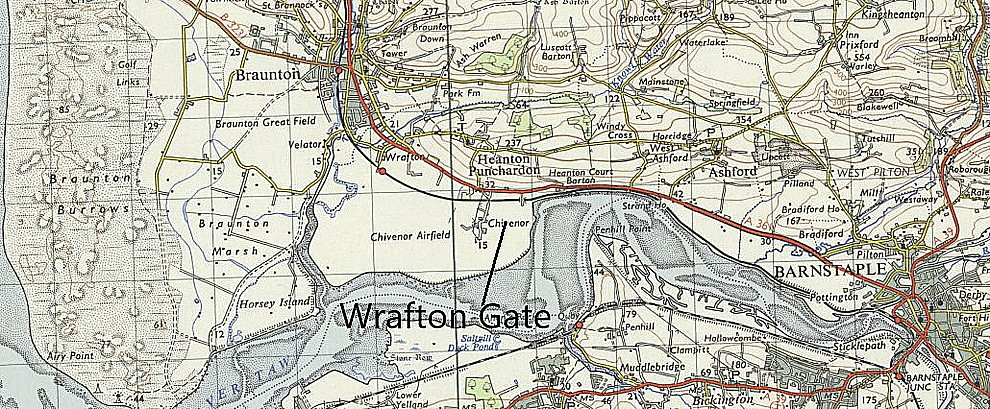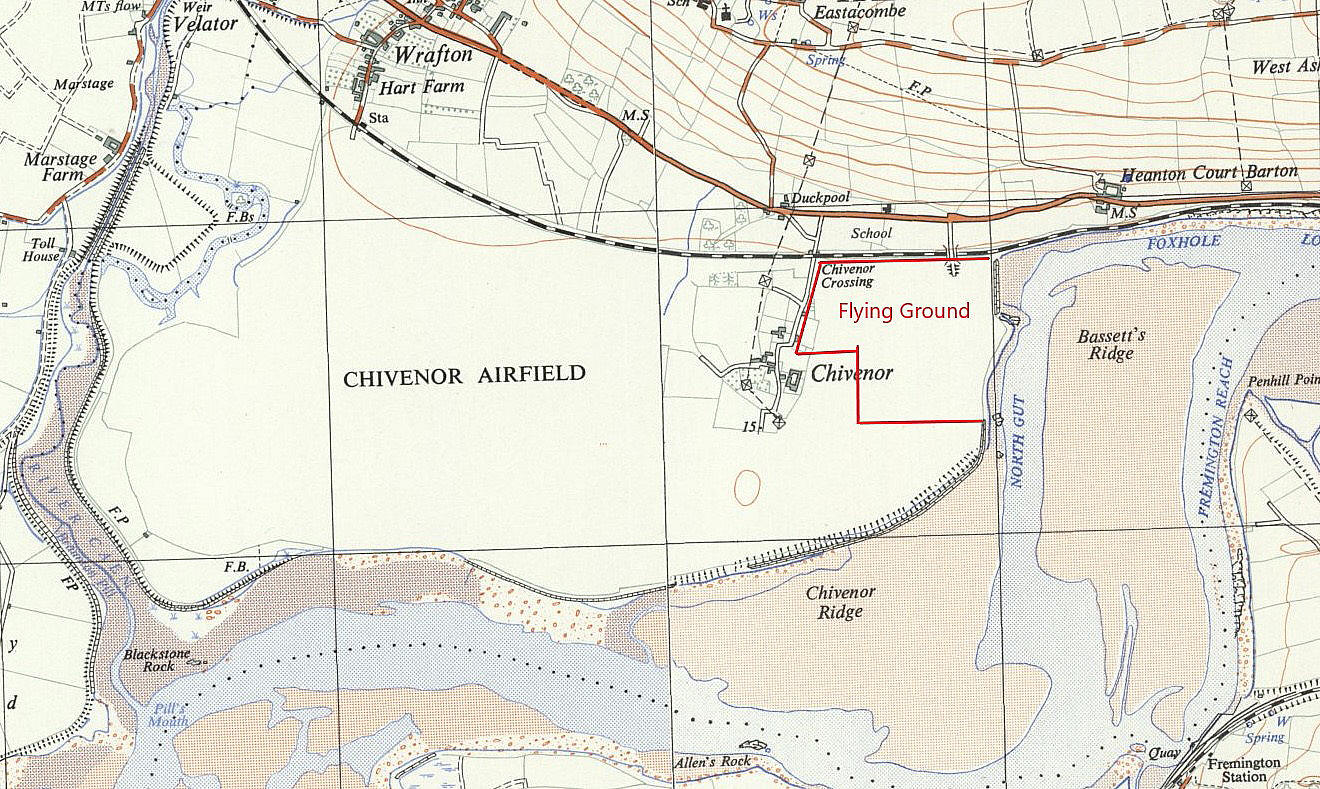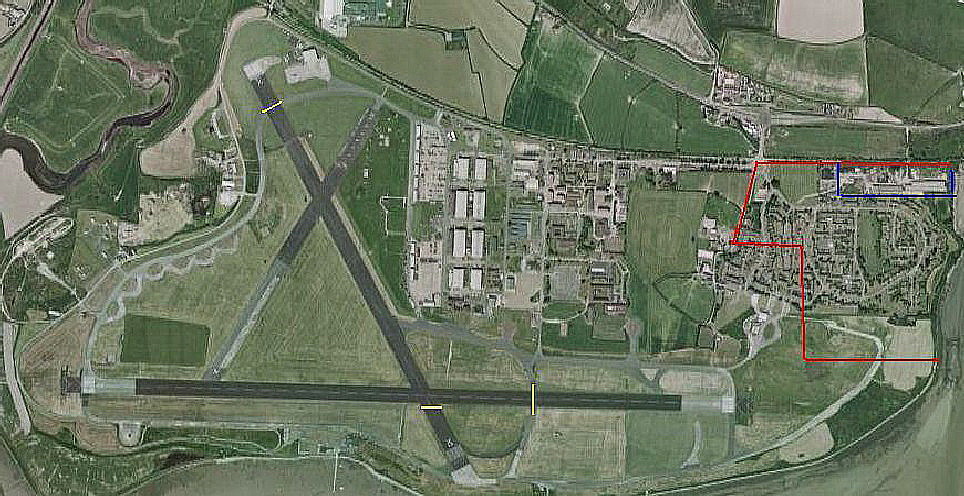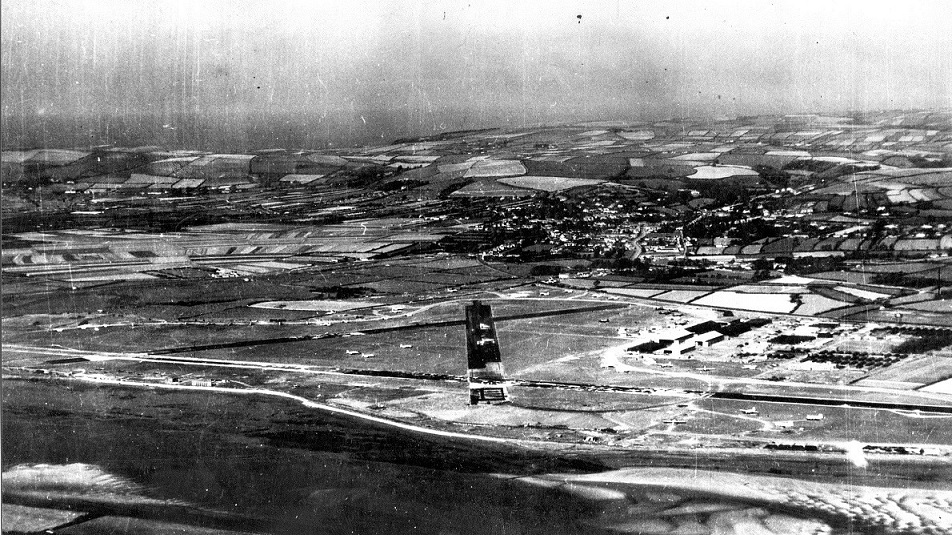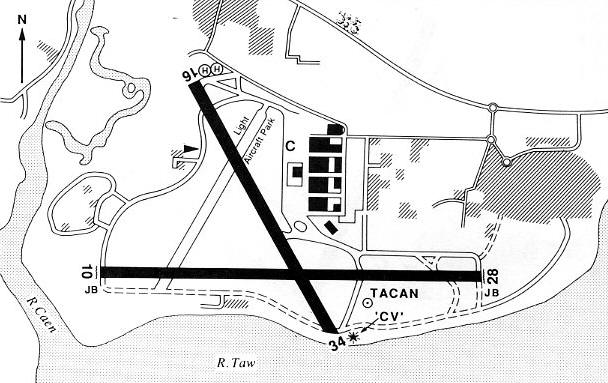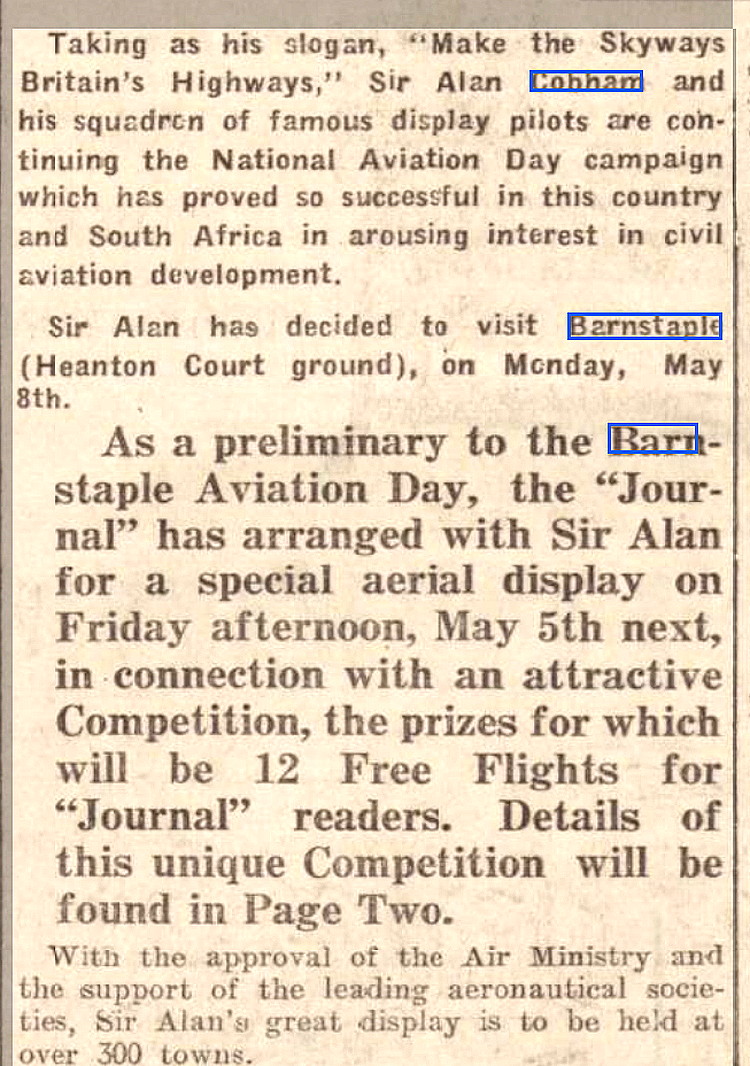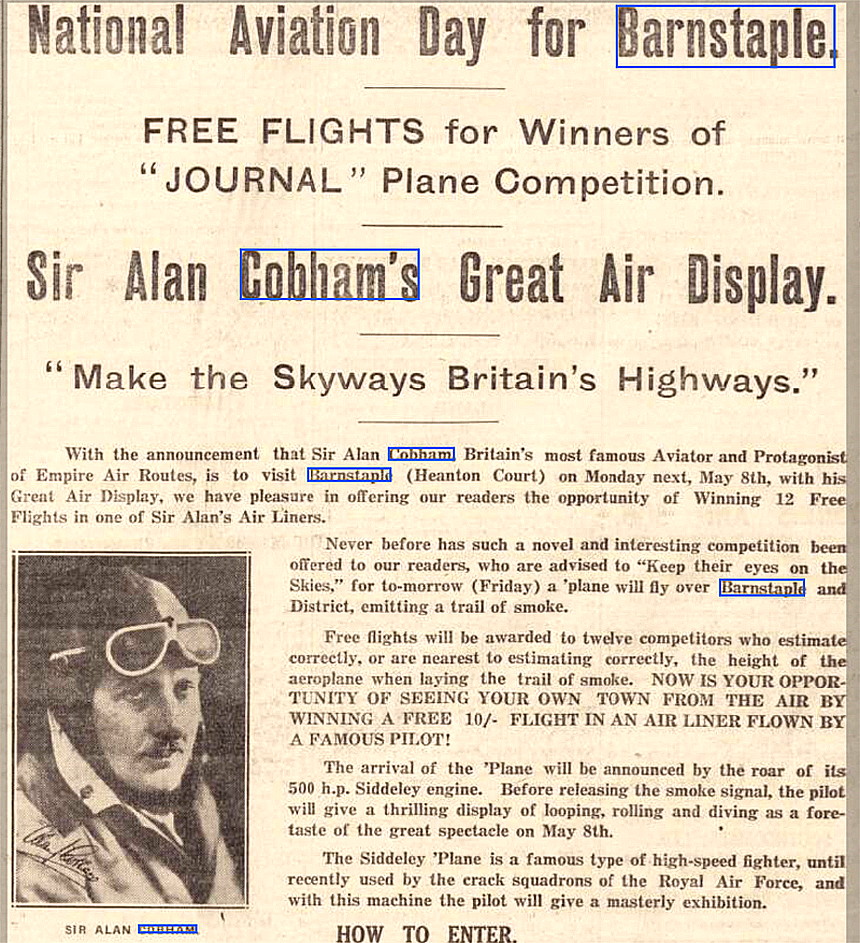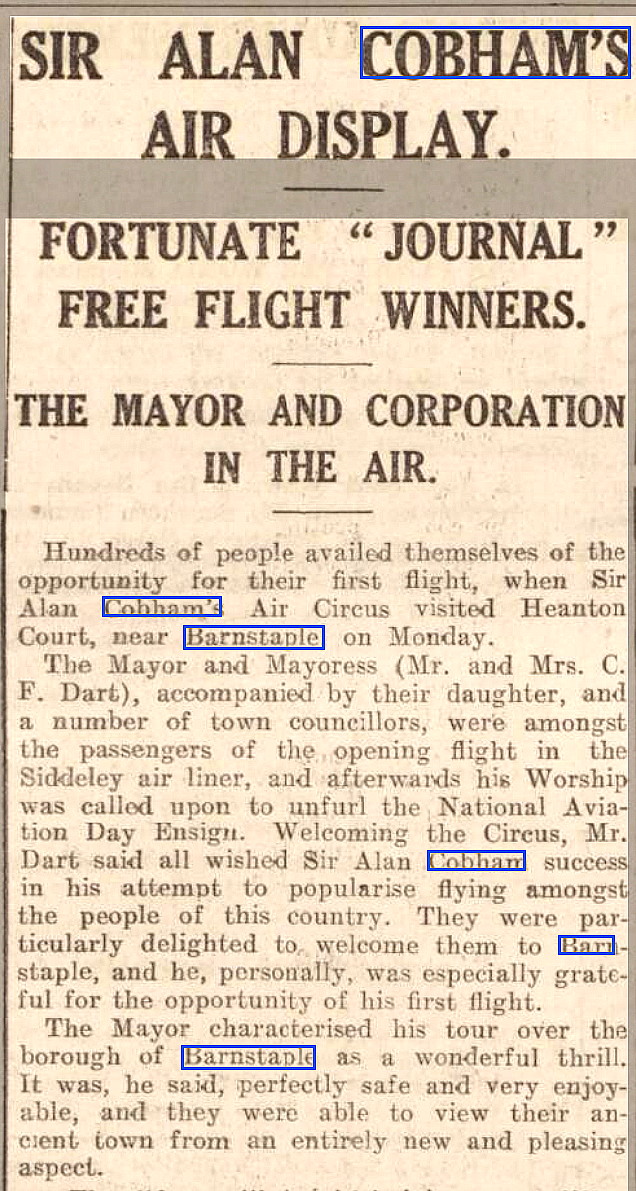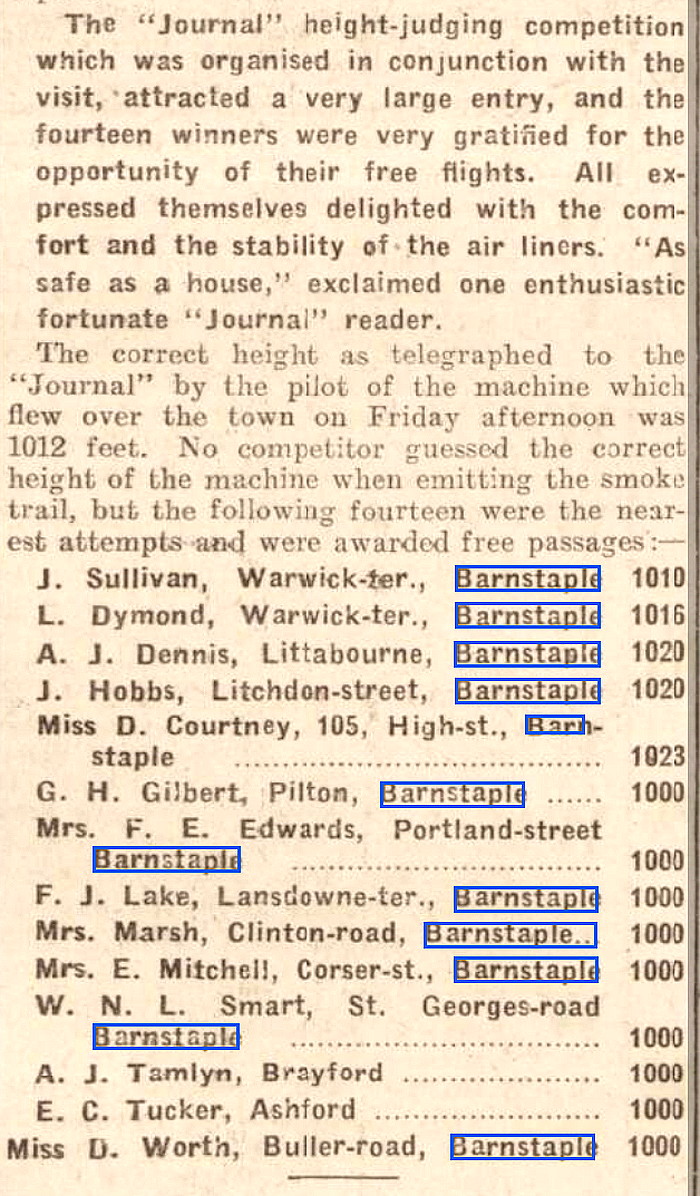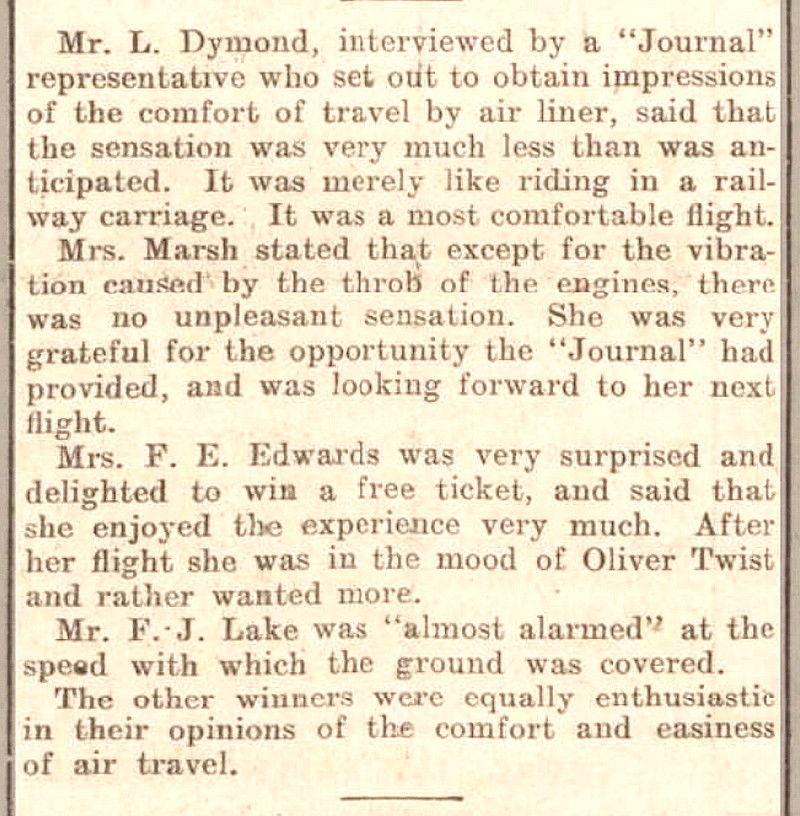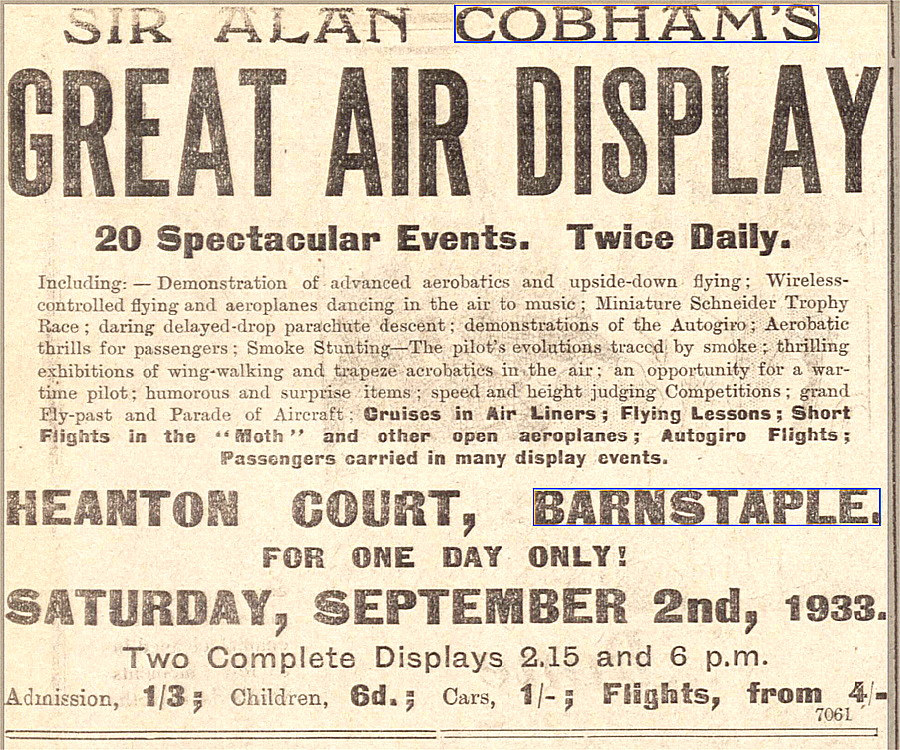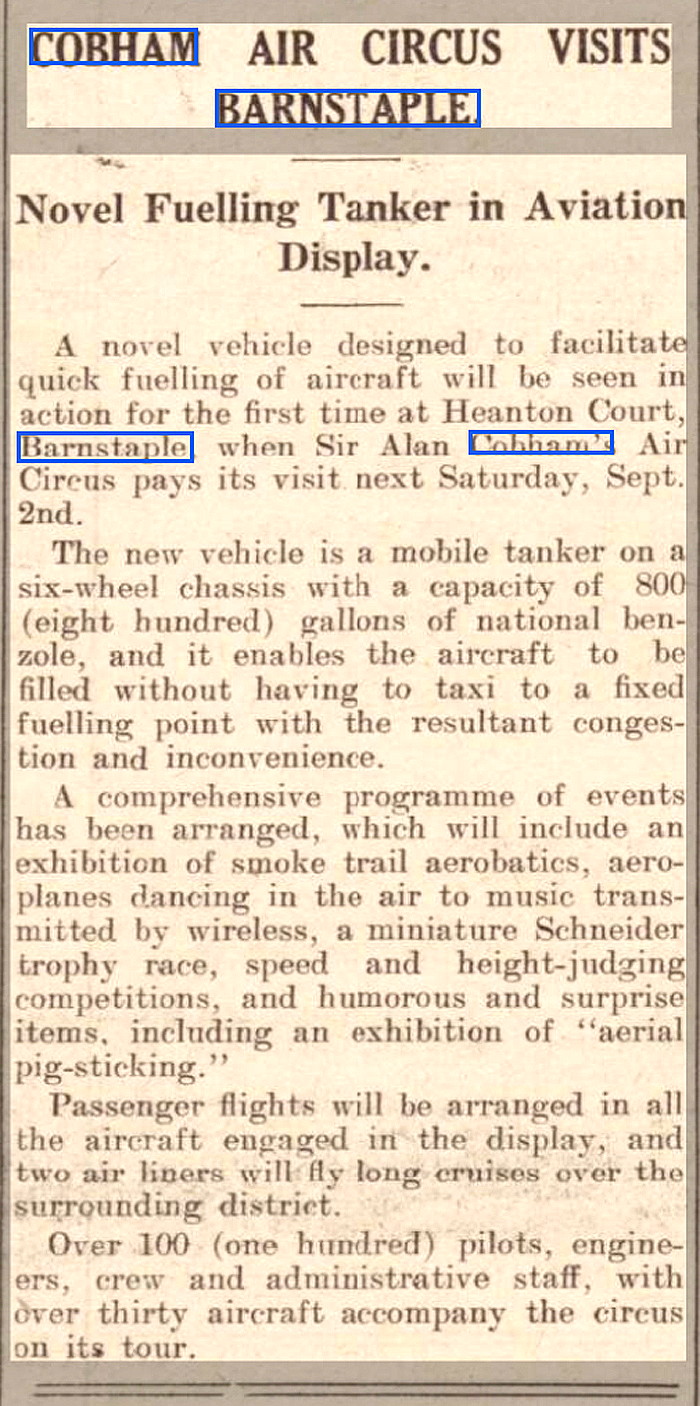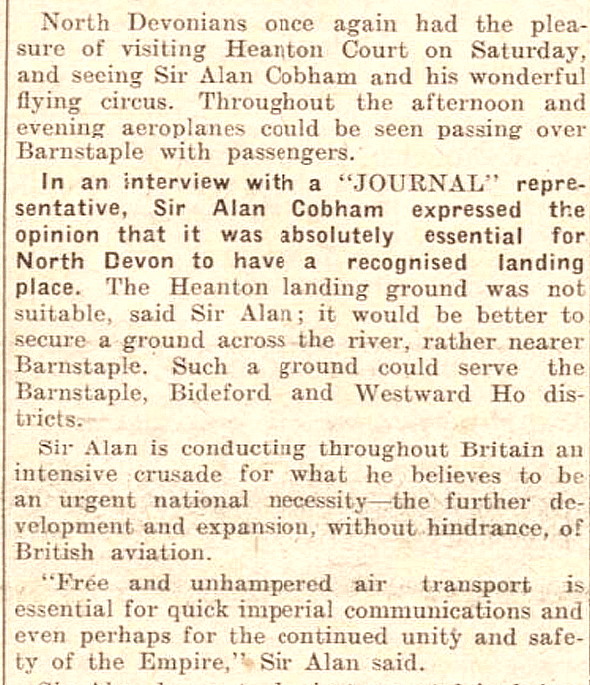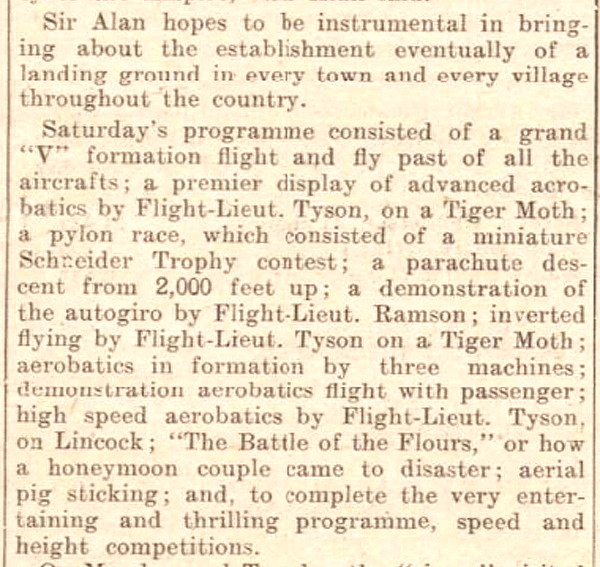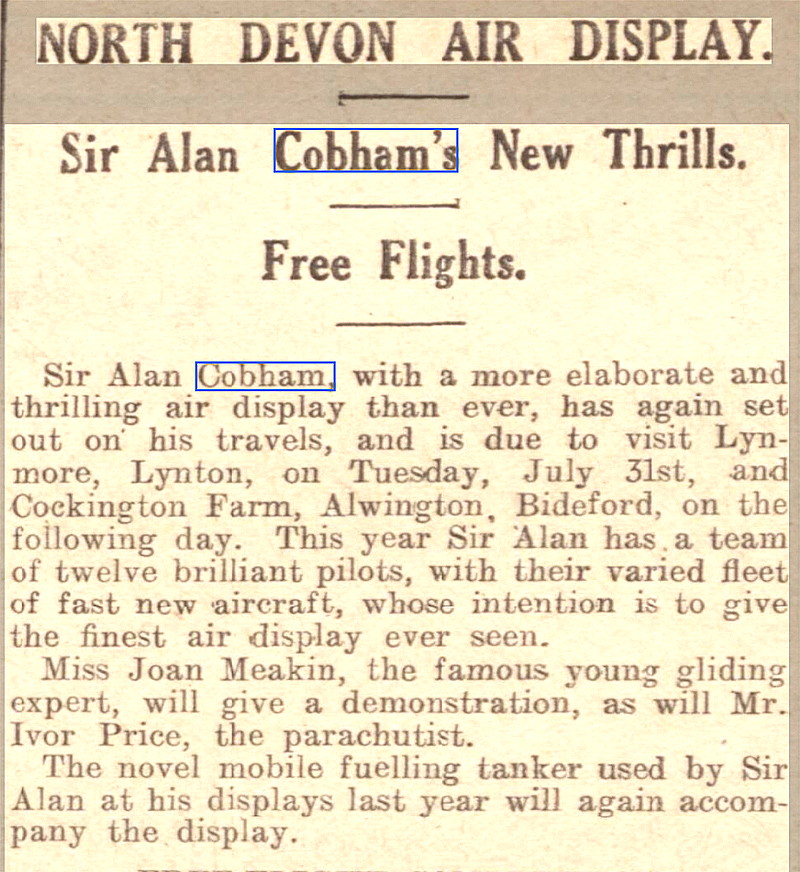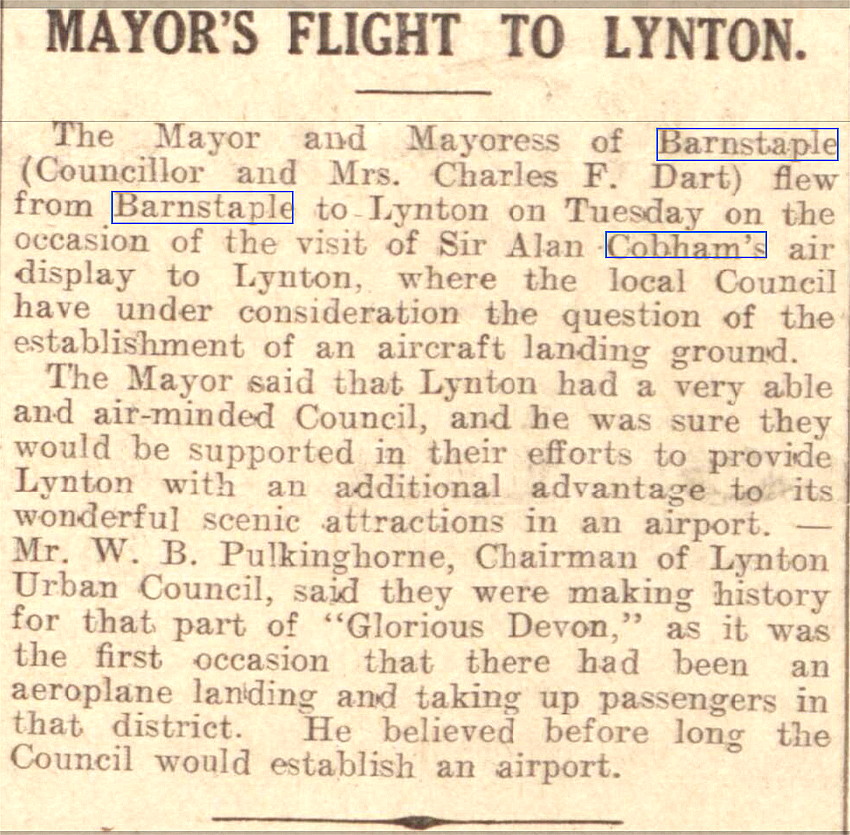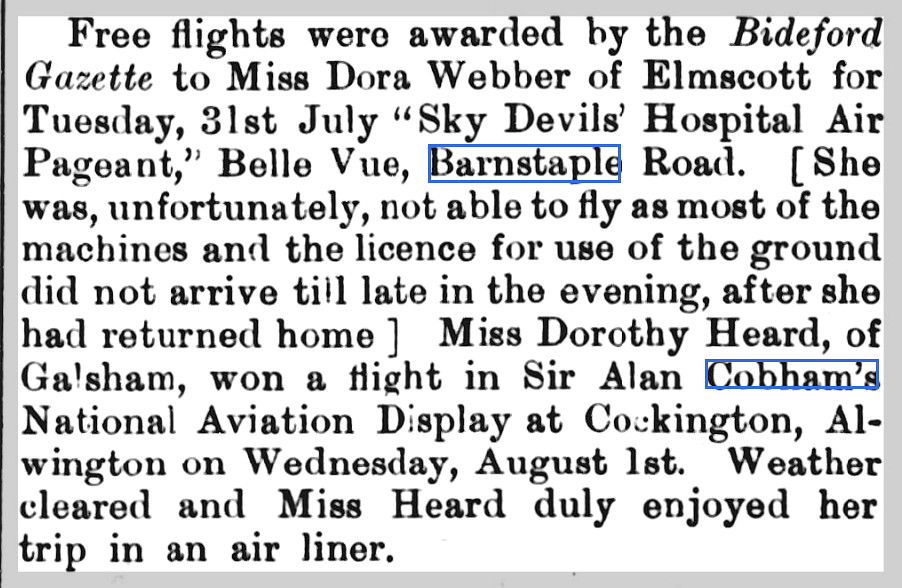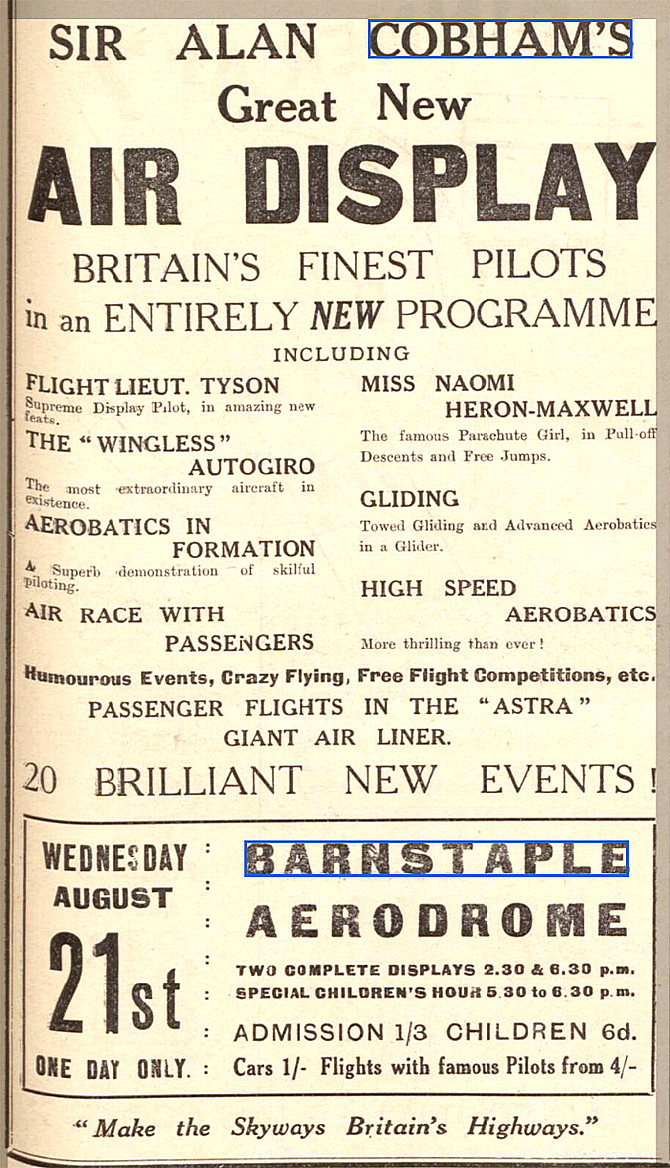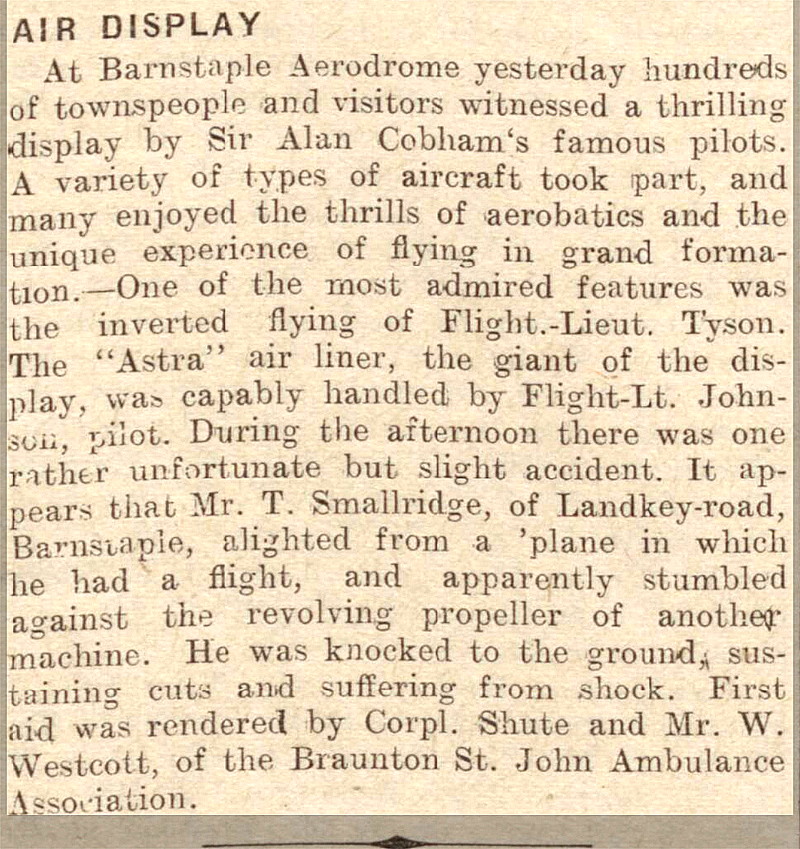Chivenor
CHIVENOR: Civil later military aerodrome
(Previously also known as BARNSTAPLE, BARNSTAPLE AERODROME, BARNSTAPLE AIRPORT, BELLE VUE, NORTH DEVON AERODROME, DEVON AIR PARK, CHIVENOR FARM and HEANTON COURT)
NOTE: See also the listing for WRAFTON GATE, which was used in the 1950s and 60s for civil operations, this name given to distinguish it from RAF CHIVENOR.
AN INTRODUCTION
I have to say that over the last twenty five years, especially in the early days, this location has been, without being in any way melodramatic, an utter nightmare! Of all the 6000+ listings so far I am certain that I have never found a location called by so many distinct names. It was only in 2024 that I finally managed to make any sense of it all. In effect it is just one location geographically. The original 1930s aerodrome, (at the eastern end), was later subsumed within the much larger WW2 aerodrome.
To quote from the RAF Chivenor web site: "RAF station Chivenor was commissioned on 25th October 1940 within 17 (Training) Group, Coastal Command. It retained the old grass airfield at Wrafton Gate as a satellite and the former civilian hangar and the airline staff became a part of the Civilian Repair Organisation, overhauling and repairing light aircraft requisitioned for the RAF. However, within a year it was realised there was a need for longer runways at the new Chivenor airfield, along with more aircraft dispersal and marshalling areas. Because of the boundary limits imposed by the adjacent estuary, that could only be achieved by extending the airfield to the east. It meant the site of the old Barnstaple Aerodrome would be swallowed up by the expansion. The runways continued to be progressively extended and by 1944 the east-west runway had been re-aligned to 10/28 and extended to 2,000 yards."
Note. Pictures by the author taken in June 2015.
THE BEGINNING
Article One was published in the North Devon Journal on the 11th January 1934 and their Article Two on the 22nd March that same year. These kindly provided by Mr Mike Holder.
Operated by: 1933 to 1934: Mr Robert ‘Bob’ T Boyd and T W J ‘Tommy’ Nash
(Barnstaple & North Devon Air Services, later Atlantic Coast Air Services)
THE OPENING CEREMONY ON THE 2nd APRIL 1934
Note: The first and fourth pictures were kindly supplied by Mr Maurice J Wickstead. The photo in Flight magazine was published on the12th April 1934.
1934 to 1939: Barnstaple and North Devon Flying Club
When opened on July 13th 1934 called – BARNSTAPLE and NORTH DEVON AERODROME.
Location: S of the A361, about 1.5nm SE of Braunton town centre, roughly 4nm W of Barnstaple town centre
Note: This picture from a postcard was kindly sent by Mike Charlton who has an amazing collection. See: www.aviationpostcard.co.uk
The map with captions to further illustrate this location was kindly provided by Mike Holder.
MAPS AND A PICTURE
The 1933 local map was provided by Mr Graham Frost. The second and third maps by Mr Mike Holder. The recent photograph of Chivernor is from the Devon Airfields Index and shows the area occupied by the former Barnstaple and North Devon aerodrome, outlined in red. The blue outline shows the area of the original buildings and the yellow lines mark the limits of the original RAF Chivenor runways.
British airline users: Atlantic Coast Air Services, Barnstaple & North Devon Air Services, Western Airways
Post 1945: Cambrian Air Services
Period of operation: 1933 to ?
Military users: WW2 RAF Coastal Command 19 (GR) Group
RAF Flying Training Command
Initially No 17 Training Group and later 3 OTU from November 1941
279 (ASR) Sqdn (Lockheed Hudsons)
14, 172 & 407 Sqdns (Wellingtons) 235 & 252 Sqdns (Beaufighters)
502 Sqdn (Armstrong-Whitworth Whitleys)
1417 (Leigh Light Trials) Flight (Vickers Wellingtons)*
Post 1945: RAF No.1 Tactical Weapons Unit
229 OCU (Vampires & Hunters)
RAF Flying Training Command 63 & 151 Sqdns (Hawks)
22 (SAR) Sqdn (Wessex) 2 TWU
4 AEF (Chipmunks)
1998 snapshot: RAF Search and Rescue 22 Sqdn HQ
A Flight 2 x Westland Sea King HAR 3A
Flying Club/charter: 1950 to ? Devonair, Devon Air Travel, North Devon Flying Club, Puffin Aeroclub and North Devon Air Centre, Wrafton Flying Club
In the 1957 The Aeroplane directory, the Puffin Aero Club and North Devon Air Centre, (Devonair Ltd), were listed as operating one Auster, one Miles M57 Aerovan, and one Miles Hawk-Trainer 3.
I will bet there are many a tale to be told about operations performed with the Aerovan?
Gliding: 1990s: Royal Marines 624 VGS
Note: This picture was kindly supplied by Maurice J Wickstead and was presumably taken in WW2?
Site area: 1934: 45 acres
WW2: Expanded to 500 acres
Note: This map is reproduced with the kind permission of Pooleys Flight Equipment Ltd. Copyright Robert Pooley 2014.
Runways: WW2: 10/28 1828x46 hard 16/34 1070x46 hard
06/24 1335x46 hard
1990: 10/28 1833x46 hard 16/34 1254x46 hard
NOTES: This flying site was established by Mr Boyd in 1933 leasing 45 acres and known as the BARNSTAPLE and NORTH DEVON AERODROME. But, it appears that the site was also known locally as HEANTON COURT. A publicity item provided by Maurice Wickstead appears to confirm these records. He sent me this: “4th May 1933. NOVEL AIR DISPLAY THRILLS. Tomorrow’s advance display for North Devon Journal Readers competition. Friday 5th May 13.30 to 14.30, the North Devon Journal Aeroplane competition Siddeley machine will give a special advance display over Barnstaple to publicize Cobhams visit next Monday and to remind members of the exclusive journal competition. Coming to HEANTON COURT”.
THE FLYING CIRCUSES COME TO TOWN
These give a perfect illustration of just how easily I was confused in years past. The address given for Sir Alan Cobham's National Aviation Day displays on the 8th May and 2nd September 1933 were, respectively, HEANTON COURT, and NORTH DEVON AERODROME. Then, the address for the Sky Devils display on the 31st July 1933 was - BELLE VUE!
It also appears that the British Hospitals Air Pageant may have displayed here on the 1st and 2nd June 1933?
A MICHAEL T HOLDER GALLERY
Here once again, in May 2024, Mike Holder has very kindly taken it upon himself to see what mentions in the press of the time are available.
MAY 1933
Article One was published in the North Devon Journal on the 27th April 1933. followed by Article Two on the 4th May. The venue being given as Heanton Court, Chivenor Farm, Barnstaple.
Article Three, in three parts, was published in the North Devon Journal on the 11th May 1933.
SEPTEMBER 1933
This time the venue address was - NORTH DEVON AERODROME
All of the above were published during 1933 in the North Devon Journal. The advert on the 24th August, Article Four on the 31st August and Article Five in two parts on the 7th September.
JULY / AUGUST 1934
I cannot recall reading another account of Sir Alan Cobham during his National Aviation Displays doing something like this. Picking up passengers, notable passengers of course in this case, to fly them to one of his venues, LYNMOOR near Lynton in this case.
Article Six was published, here once again in the North Devon Journal, on the 19th July 1934 and Article Seven on the 2nd August.
Article Eight was published in the Hartland and West Country Chronicle on the 29th August 1934.
AND FINALLY
Here once again, both of these items also published in the North Devon Journal. The advert on the 8th August 1935 and the article Nine on the 22nd August 1935. This was during the last of Sir Alan Cobham's National Aviation Day display tours which started in 1932.
AIRLINE SERVICES
The original operators of this site, Mr Nash and Mr Boyd, established a service to LUNDY ISLAND with two DH.60G Gipsy Moths (G-AAIM & G-ABBK) and a DH.84 Dragon G-ACCR and this was called Barnstaple & North Devon Air Services. This operation later became Atlantic Coast Air Services. When the Dragon crashed on LUNDY ISLAND it was replaced by the GAL Monospar ST.4 G-ACCP. Although it appears that they only operated a service to LUNDY ISLAND initially, services to Cardiff (presumably PENGHAM MOOR?), JERSEY (presumably St AUBINS BAY) and Plymouth (ROBOROUGH) followed, especially as the fleet acquired the Short Scions G-ACUW, G-ADDO and G-AETT. For this information, (and other info on this site and much, much more), I have mostly my good friend Maurice J Wickstead to thank and he has produced probably the finest history of British airlines which is available from Air Britain and titled, Airlines of the British Isles since 1919.
WORLD WAR 2
Requisitioned by the Air Ministry at the outbreak of war, (probably in 1939), and expanded to 500 acres from Marsh and Chivenor Farms. Opened on the 25th October 1940 it appears but the building work by Geo Wimpey Ltd was not completed until January 1941.
502 SQUADRON ETC
On the 30th of November 1941 a 502 Squadron Armstrong Whitworth Whitley VII, (Z 9190), equipped with A.S.V. radar is claimed to have made the first Coastal Command ‘kill’ by sinking the ‘U 206’ in the Bay of Biscay whilst operating from here.
Also during this period a Luftwaffe Junkers Ju-88 landed here on the 26th November 1941. It is claimed the crew were misled by a ‘Meacon’ radio beacon. Which raises questions still pertinent today, regarding pilots getting back to basics and reading maps, rather than depending on solely on gizmo’s for navigation.
From September 1942 Luftwaffe Junkers Ju88C-6 long range fighters were posing a severe threat to RAF long-range patrol aircraft, sixteen of which were shot down in October alone. To counter this two squadrons of Beaufighters, No.235 based here and No.248 at TALBENNY (PEMBROKESHIRE) were quickly deployed. Their task was to attack both airborne Junkers Ju88s, Focke-Wulf FW.200s and, to some extent at least, enemy shipping and U-boats.
THE LEIGH LIGHT
*The Leigh Light did progress and, in conjunction with ASV radar was fitted to RAF Coastal Command Catalina’s and Liberators. Having this fitted must have been very frustrating to these crews as they rarely had any chance to intercept a U-boat. Indeed, as learnt later, it was seen as such a formidable ‘weapons system’ (as we might say today), that U-boat crews decided to recharge their batteries on the surface during daylight hours, when they had a chance of spotting an aircraft. This in turn did lead to a greater level of successful attacks, although, in many cases, the crew of the aircraft also perished.
CIVILIAN VISITORS
In the early 1990s a civil Auster confronted with bad weather made a diversion into this RAF aerodrome and were very well treated by the RAF. I know because I met the ‘crew’ of the Auster shortly after their visit. I make the point because prior to WW2 it was generally accepted that private pilots could use most RAF stations. They were after all probably acquainted, more or less, and certainly affiliated by ‘class’. The Auster crew were definitely not ‘upper class’, but it was nice to see the camaraderie of those who fly was still being respected.
ANOTHER SMALL ASPECT
In January 2024 Mr Graham Frost, a great friend of this 'Guide', drew my attention to the Aircraft Register regarding G-AAIM. (See above under Airlines). It now appears that this DH60G Gipsy Moth was officially registered to Lundy & Atlantic Coast Airlines on 30.11.38. It was also unusual as not being impressed for military service, unlike G-ABBK which became DG659, 20.02.41.
What became of it during WW2 remains a mystery, the registration being cancelled in December 1946. There seems to be no record of it being withdrawn from service just prior to WW2?
We'd love to hear from you, so please scroll down to leave a comment!
Leave a comment ...
Copyright (c) UK Airfield Guide















